If your building has people accessing areas where the risk of a fall exists, it is your responsibility to make sure those areas are safe.
There are many reasons why a worker may need to access an area of a building that exposes them to the risks of a fall. And although it is up to the worker and their employer to ensure they carry out work in a safe manner, it is up to the building owner, facility manager or site supervisor to ensure the worksite itself is safe.
Meeting this duty of care can require understanding what risks exist at a site or in a building, developing ways to mitigate those risks and providing workers with the information they need to carry out their tasks safely.
Identifying and responding to risks
The first step any person responsible for a building or workplace should do is identify any potential safety risks that exist. In terms of height safety, this may require undertaking a height safety audit to make sure that all potential areas of fall risk are identified.
A major contributing factor to falls in workplaces is that many potential risks are not identified and, as a result, not mitigated correctly or at all.
Once a potential fall from height has been identified, it must be assessed for potential severity and likelihood of an accident. From there, mitigation techniques can be developed and implemented.
Provision of safety systems
Depending on the risk identified on a site and the assessment made of it severity, the design and installation of a height safety system may be required.
Height safety systems can come in a variety of shapes and sizes, and be made up of components from a number of different manufacturers. These include roof anchors, static lines, rigid rails, platforms, walkways, and more.
The system should be designed and installed to be compliant with the relevant Australian standards, while also taking into account the specific risks that exist on site and the access requirements that need to be met by it.
System compliance
Having a height safety system installed on its own is not enough for a workplace to say they have met their duty of care to create a safe place of work. That system must be maintained and kept in compliance with the relevant Australian standards (specifically, AS/NZS1891.4).
Keeping a system in compliance typically involves getting an annual inspection completed by a height safety specialist. During the inspection they will check over the system, making sure that all the components are in good working order and have been installed in accordance with the manufacturers instructions.
Following the inspection, compliant systems are issued a certificate by the inspector confirming their compliance. Systems that do not pass inspection, or partially pass, will receive a report outlining what the compliance issues are as well as what action needs to be taken to rectify it.
Operating manuals and documentation
Any installed height safety system should also have all the relevant documentation and operating manuals available.
These documents inform anyone needing to access and use the system how to do so, what equipment is required as well as any limitations the system may have. These limitations could include things like the number of concurrent users that can be connected to the system, as well as any restrictions on areas that can or cannot be accessed using it.
Before use, a building owner, facility manager, or site supervisor should ensure that workers have read through the documentation and understood the contents before accessing the system.
Induction and sign-on
Having a worker read through the system documentation typically forms part of a system induction. These inductions may be included as part of a wider site induction, or conducted separately only for those workers needing to access a high-risk area using the height safety system.
Exactly what the induction looks like for each site and each height safety system will be different, but the fundamentals will be the same.
The induction will cover off how to access the system and how to use it correctly. It would also talk about the system limitations and any restrictions of use that a worker needs to be made aware of.
An induction would also check that a worker has the skills required to safely use the system, along with all the correct equipment.
An induction may also require a worker or teams of workers to have both a plan on how to perform a rescue and the equipment needed to action that plan. Even though preparation can be thorough prior to work starting, accidents can still occur. Responding to an accident quickly and efficiently can contribute to reducing the potential severity.
Be an active participant in safety
Once work begins, workers should be monitored to ensure their use of the system is in line with the documentation and procedures provided. Regular check ins with teams can assist in reminding them of the risks associated with their work and the tools they have at their disposal to mitigate them.
Creating safe places of work requires that all parties to a job be active participants in the safety process. It is not enough for a site supervisor, building owner or facility manager to think just because they have hired someone to complete a job that their safety duties have been met.





